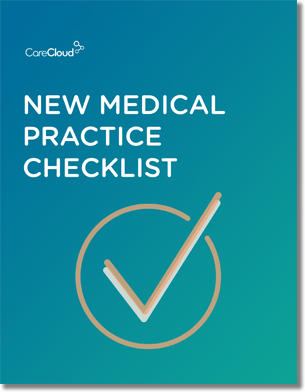Tensions are mounting at HHS and ONC over the correlation between EHR adoption and an increase in inappropriate billings to payers and Medicare. Critics say these improper billings could undermine the benefits of the government’s push to digitize patient records.
Supporters of EHR adoption, though, claim only a fraction of medical providers are maliciously using EHRs to bill inappropriately, and the majority of increases in collections are due to more accurate coding.
“There is a lot we don’t know about that,” said Farzad Mostashari, the National Coordinator for Health Information Technology, at a hearing of policy experts studying the billing issue. “We don’t know if the shift (in higher billing) reflects appropriate coding or inappropriate coding.”
The problem lies in the fact that best practices for quality EHR documentation have not been well defined yet and are not well understood by clinicians.
In September 2012, the HHS and Attorney General sent five hospital associations a warning letter about the dangers of using EHRs to defraud the billing system. The joint letter came in the wake of a last summer’s report from the Office of the Inspector General at HHS, specifying there had been a climb in E&M coding levels in Medicare claims between 2001 and 2010.
The American Hospital Association responded by saying, “America’s hospitals take seriously their obligation to properly bill for the services they provide to Medicare and Medicaid beneficiaries. Hospitals have a longstanding commitment to compliance, establishing programs and committing resources to ensure that they receive only the payment to which they are entitled.”
In their retort, the AHA also denounced the use of cloning and upcoding procedures to increase collections.
Cloning and Upcoding
For small practices, it’s sometimes tempting to save time by copying and pasting patient information from one record to another, a process known as “cloning.”
EHRs make cloning easy by providing standard templates, but physicians and administrative staff should avoid cut and paste at all costs. Not only does it provoke auditors looking for potential healthcare fraud, but it can also propagate a hidden mistake over multiple consultations or transfer it from one file to countless others.
EHRs are also driving the industry toward charts that look remarkably similar because they’re based on templates created by technology vendors that often use the same verbiage. This can make doctors appear like they’re committing fraud.
In a testimony delivered by Ivy Baer, Senior Director of Regulatory and Policy Group at the Association of American Medical Colleges (AAMC), she recommends vendors limit the use of the copy/paste functionality within EHRs. This should be combined with a feature that flags anything that is pasted by making the text appear in a different color or another font.
The ONC is also looking into allegations that some physicians are overbilling Medicare by selecting higher-paying treatment codes than the level of care actually calls for, a process known as “upcoding.”
The Center for Public Integrity claims such practices have cost the Medicare program more than $11 billion in fraudulent fees.
However, many providers say that billing with higher-paying codes is just another benefit of EHR adoption.
“Upcoding does not necessarily equate to fraud and abuse,” said Sue Bowman, AHIMA’s Senior Director of Coding and Compliance. “This is an area where more study is needed. We really need to know the causes. Further research is needed on the fraud risk of using EHRs.”
Baer offers solutions for vendors and providers to prevent upcoding as well.
Providers need to be taught to only document the services they provide that are pertinent to the patient’s present problem. Avoid charging patients for past services at all costs.
During implementation training, vendors should closely monitor documentation to correct errors and educate providers in the beginning of the process.
EHRs should also include functionality that identifies the author of any note or portion of a note in the system. This will decrease fraudulent overcharges by mischievous staff members.
Like with patient care, as long as providers are diligent, they should be fine with their documentation and billing processes. It’s up to the vendors to provide safeguards that will keep practices from accidentally committing fraud.

Do you know what you need when setting up a new medical practice?



